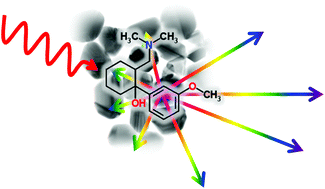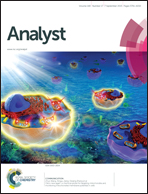Detection and quantification of the opioid tramadol in urine using surface enhanced Raman scattering†
Abstract
There is an on going requirement for the detection and quantification of illicit substances. This is in particular the case for law enforcement where portable screening methods are needed and there has been recent interest in breath tests for a range of narcotics. In this study we first developed surface enhanced Raman scattering (SERS) for the detection of tramadol in water and establish robust and reproducible methods based on silver hydroxylamine colloid. We used 0.5 M NaCl as the aggregating agent, with the pH ∼ 7.0 and SERS data were collected immediately (i.e., the analyte association and colloid aggregation times were zero). The limit of detection was rather high and calculated to be 5 × 10−4 M which would not be practical in the field. Undeterred we continued with spiking tramadol in artificial urine and found that no aggregating agent or modification of pH was necessary. Indeed aggregation occurred spontaneously due to the complexity of the medium which is rich in multiple salts, which are commonly used for SERS. We estimated the limit of detection in artificial urine to be 2.5 × 10−6 M which is equivalent to 657.5 ng mL−1 and very close to the levels typically found in individuals who use tramadol for pain relief. We believe this opens up opportunities for testing SERS in real world samples and this will be an area of future study.


 Please wait while we load your content...
Please wait while we load your content...